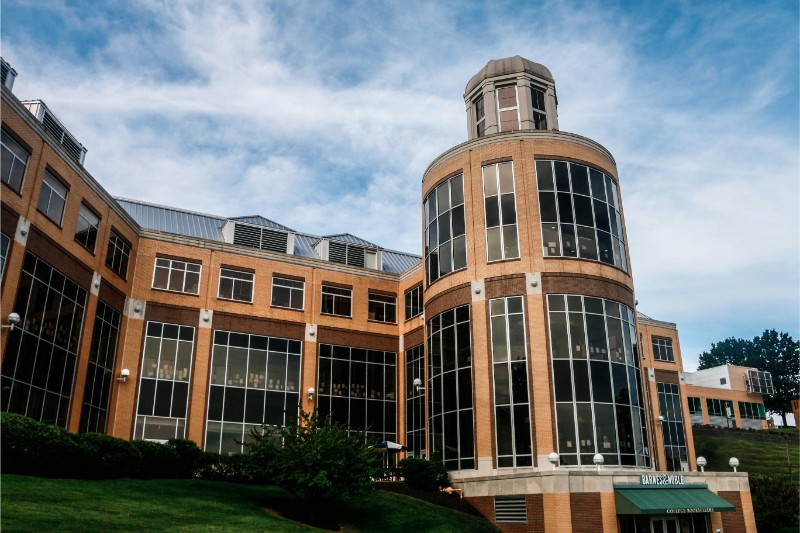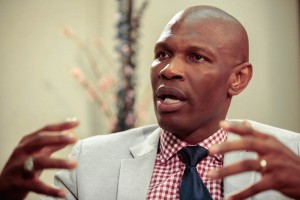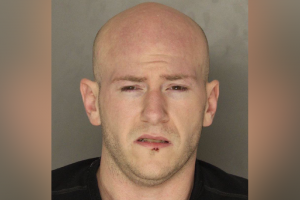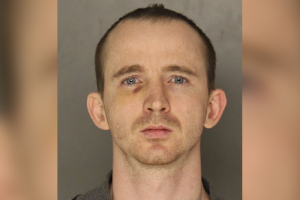Students: ‘Did I make the right choice to come to Robert Morris University?’
“Did I make the right choice to come to Robert Morris University?”
Since the announcement of budget cuts from the University, many students have demanded answers from their University administration.
February 22, 2019
MOON TOWNSHIP – Since the Town Hall on Jan. 29 in which RMU President Christopher B. Howard announced that the university needed to cut $4-5 million in payroll, there has been concern from the students at Robert Morris University as to the futures of their programs and their entire school. Some of the more outspoken students have called for a forum or meeting, where Dr. Howard can answer their concerns and questions.
Olivia McCafferty, a senior engineering student at Robert Morris, went on Twitter to express her concerns and the need for answers from Dr. Howard.
Hey, @DrChrisHoward
If roughly 80% of this University’s revenue comes from student tuition, tell me why we are being kept in the dark about decisions being made for the campus as a whole.
Decisions such as opening 4 new positions related to sports while laying off roughly…
— ʟɪᴠ (@liv_mccafferty) February 13, 2019
To view all of McCafferty’s tweets click HERE
McCafferty asks the question, “If roughly 80 percent of this university’s revenue comes from student tuition, tell me why are we being kept in the dark about decisions being made for the campus as a whole.”
“I called on Dr. Howard to basically set up a forum in which students can voice their concerns, they can express how they’re feeling and they can ask questions so we can get the right information,” said McCafferty when speaking with RMU Sentry Media. “I think it would be better to hear it from RMU first rather than my parents from three hours away.”
The tweet from McCafferty ended up garnering a large amount of attention from the RMU community, resulting in 65 retweets and 328 likes on Twitter.
“I actually posted it after one of my classes. After getting a vibe from a professor I really respect and hearing about the morale of campus. And there were a few more things that have added to what I already knew what was going on on campus,” said McCafferty. “And then that was the straw that broke the horse’s back.”
From her original tweet, it was clear that many students at Robert Morris felt similarly to McCafferty.
Six days after the tweet went viral around campus, Dr. Howard and the university responded.
An email was sent out to all students with four time slots of one hour that Dr. Howard was able to meet with students for 20-minute one-on-one sessions regarding their concerns and questions surrounding the changes at Robert Morris.
“We did it,” said McCafferty in a tweet sent out Feb. 18. “Could never have happened without all of the sharing from the original tweet. Now let’s commit to seeing a change happen and making the most of these opportunities.”
The one-on-one meetings are set to be held on Feb. 21, 25, 26 and 27 with an hour slot on each of those days. The office hours with President Howard allow for 16 students to discuss with the university president their own personal concerns. It is unknown as to whether future office hours will be set up in the coming weeks. Howard is also set to make a public appearance next Monday at “Pizza with the President” and will also be appearing at an SGA meeting on April 9.
Howard’s office hours will be the first chance for students to directly address their university president regarding issues that many did not know about until RMU Sentry Media broke the story last month.
“The first time I heard, like everyone else, was when Sentry Media posted the article on Twitter, on Facebook and I had heard from a lot of staff members because they had a meeting in Massey Theatre,” said Aveenash Kumar, the president of the Student Government Association. “Like everyone else, I think we read the article and I thought ‘Wait, what’s going on?’ Never heard about it, never thought of it.”
Kumar is an active member of the RMU community who not only serves as president of SGA but also as a tutor on campus, a student worker in the Office of Student Life, a global diplomat and a member of various clubs such as the Residence Hall Association, College Republicans and College Democrats. As a member of many parts of the RMU community and a senior in his fourth year at RMU, Kumar has heard many concerns from students since the announcement regarding restructuring. As a mentor to many incoming international students, Kumar discussed how their concerns come from a lack of knowledge of the situation.
“As a student leader on campus … I have a lot of mentees who are international students,” said Kumar. “Those students, it’s their first semester, and they are coming as seeing RMU as a positive school as a good community, when they hear things like how enrollment is down, how there are budget cuts, how the schools are shutting down, that really puts them in a situation where it’s like, ‘Did I make the right choice to come to Robert Morris University?'”
Kumar says the concern goes beyond just his mentees as well.
“Even just walking around, you see your friends talking about it, on social media you see all your friends sharing the post and expressing concerns with what was happening, and it was definitely disheartening to see,” said Kumar.
After being able to schedule Howard to come to an SGA meeting and seeing the email regarding Howard’s office hours, Kumar is happy with the progress made towards transparency.
“I’m glad that there have been some steps towards explaining that to students,” he said.
Among all the concerns and controversy, there are students who rather than concern, they understand that this issue goes far beyond the walls of Robert Morris University and that the decline in enrollment is a struggle felt by many colleges across the country.
Jimmy Pietras, the president of the Class 2019, says he understands that the university is doing the best they can to continue to provide students with an excellent education. Pietras understands the concerns of his fellow students and wants to help provide all the information he can regarding restructure.
“If people come to me, I’ll tell them what I do know,” said Pietras “From talking to other faculty members and staff at the school, because they give me the actual business perspective that Robert Morris sees, not what students are hypothesizing about what’s happening … That it’s not just an RMU issue, it’s a northeastern U.S. issue that people aren’t coming here to school as often as they used to. The schools in the south are starting to flourish more since there are more people down there now. The actual population of the northeast is going down, so it’s not just Robert Morris, it is every school in this area.”
According to Forbes.com, enrollment has been down at many colleges around the United States. Schools close to Robert Morris such as the University of Akron, have seen their enrollment decline from 30,000 in 2011 to 23,114 in 2016, a decline of over 20 percent. Western Illinois University announced on Nov. 16, 2018 that the school is trying to cut $5 million from its current budget and $21 million for the fiscal year 2020, which begins July 1, 2019.
InsideHigherEd.com states the same rhetoric as Pietras, showing that college enrollment is down the most in the Northeast. Pennsylvania has also recorded the seventh-highest decline in enrollment among US states, just behind the state of Ohio.
Additionally, enrollment at four-year non-profit universities with enrollment between 3,000 and 9,999 are down 2.4 percent since spring 2016.
While it is apparent that this is a national enrollment crisis, the concern coming from the students goes beyond the issue itself, it is the lack of transparency from the school as to where the cuts are taking place and what will specifically be affected.
“To see all of this bad press and to see that is what your money is going to is things that are not adding to my degree and my educational experience on campus. I would definitely love what it is actually going to,” said McCafferty.
As the days since the Spring Town Hall continue to add up, it appears students, faculty, staff and parents will continue to look for more answers as Robert Morris attempts to answer those concerns among a national enrollment crisis.

















KATHLEEN BOHACHICK TRAUTZ • Feb 25, 2019 at 10:01 pm
As a mother of a freshman student, I am totally freaked out. A Stalker, a police attacker, $5 million in debt, Two people taking pictures unauthorized and one of her teachers missed Three classes in a row before they did anything. She also got into Pitt maybe she should go there. It’s really weighing on my mind.
Recent student • Feb 24, 2019 at 6:16 am
I graduated in 2016 from RMU and I would have definitely chose a different college if I knew how it was going to be there. The only thing good I got out of going there are my friends, it’s a nice location but the classes for the courses are ridiculous and are not needed. Some of the professors don’t do what they should to actually teach and learn in the degree. What I got mostly out of going there…. DEBT. Even with a scholarship, I only had to pay room and board but that lead to $80,000 in DEBT. PA has the highest student debt rate in the US and I even know a person in the military who got basically NOTHING to go there, but they are supposed to be for military and veterans. They’re not. Now that person is in DEBT too just with one year and can’t continue their education because of RMU. IF ANYTHING PLEASE DON’T CHOOSE RMU, GO TO ONE OF THE STATES SCHOOLS, SAVE MONEY AND ACTUALLY HAVE PEOPLE WHO CARE. RMU does not.